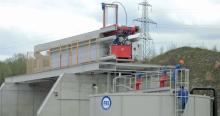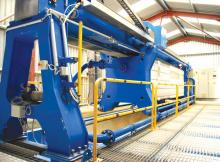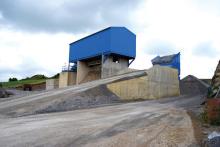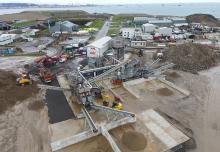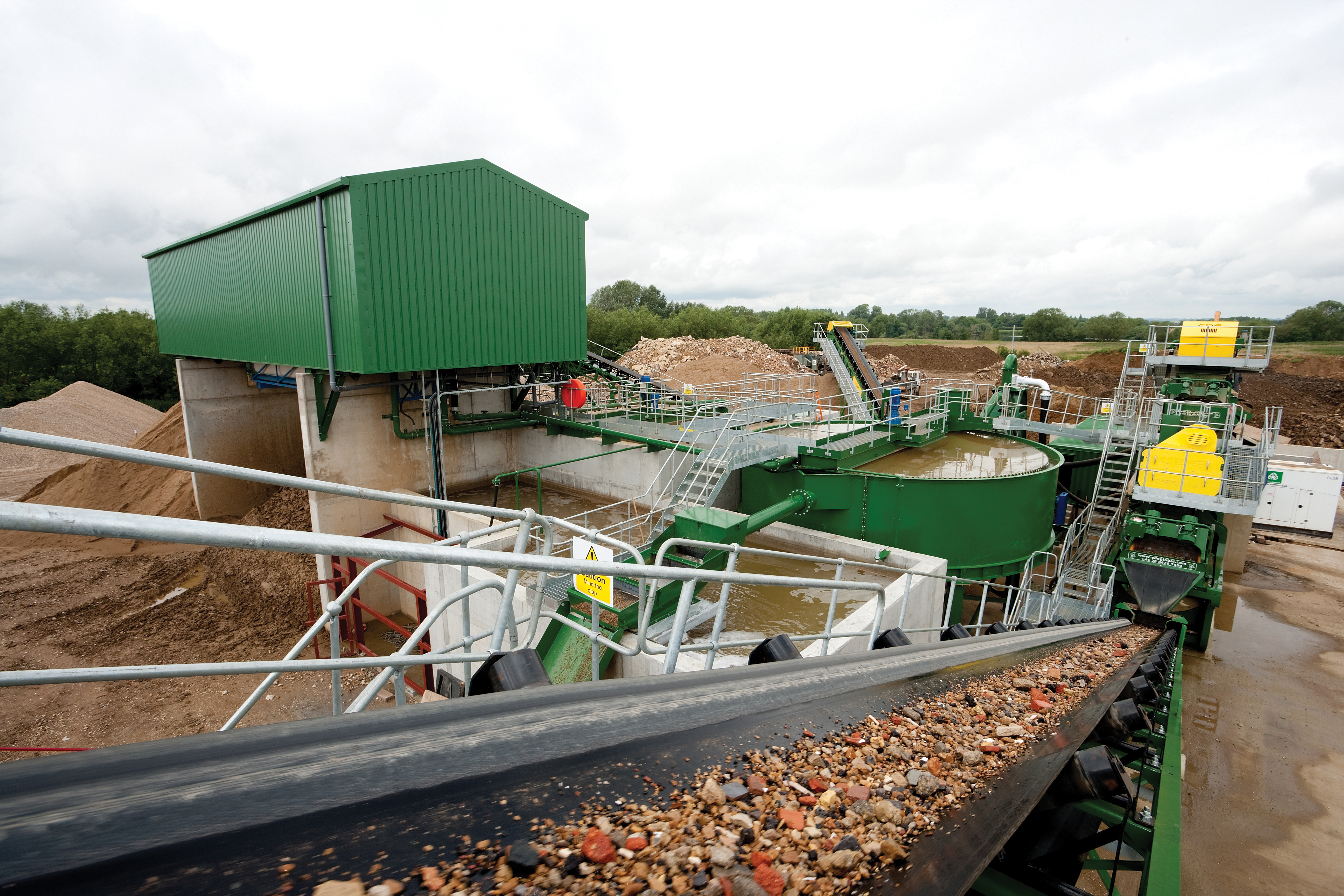
Recycling of all types of materials has been on the increase for years, and specialist equipment is helping the process as Patrick Smith reports
Today, due to increasing demands on the purity of building materials, it is necessary to wash and recycle gravel, sand, grit and other building materials.
This allows the use of recycled material and not raw material, meaning that water is used, which is soiled during the washing process. To be able to reuse it, the water has to be cleaned, says Italian manufacturer
It is one of a number of companies offering increasingly sophisticated solutions, and a recent example can be found at Sheehan Haulage & Plant Hire in the UK, which has unveiled an enhancement of its construction and demolition (C&D) waste recycling infrastructure at the Dix Pit site, near the city of Oxford, following a multi-million pound investment in a new wet processing plant from
The group proposed the new plant in May 2006 and it was finally commissioned in mid-2012.
“We knew that there was a need for investment in more advanced recycling technology for construction and demolition waste in the Oxford area and have fought for the last five years to have this recognised,” says Chris Sheehan, group managing director.
“While we regret the loss of 500,000tonnes of C&D waste recycling due to the planning process we are now pleased to say that the new plant offers our customers a greatly improved product offer with a wide range of high value applications.”
The new facility, covering approximately 150hectares, was previously used as a sand and gravel deposit, and today the group has a variety of industrial and commercial neighbours including a batching plant and a household recycling centre.
In addition to the supply of sustainable aggregates and construction materials, The Sheehan Group is also a groundwork and civil engineering contractor and is involved with plant hire and waste removal and reclamation.
“The enhanced recycling capability that our new washing plant offers enables us to progress this material up the waste hierarchy and offer a real alternative to virgin aggregates,” says Tara Sheehan, financial controller with The Sheehan Group.
All of the C&D waste material that the handles is now processed through the new CDE washing plant at Dix Pit with the licence permitting 100,000tonnes/year.
In addition to the 60,000tonnes of material processed at a previous site an additional 50,000tonnes was being sent to landfill each year as a result of the limited capability of the crushing and dry screening plant.
“The advanced processing methods that we have introduced maximise material recovery when compared to dry processing which is why we fought so hard to win the right the install the new plant,” says Chris Sheehan.
The new washing plant contains a range of equipment from the CDE product portfolio including a feed system, AggMax portable logwasher, Prograde aggregate screens and Evowash sand washing plant. The system employs full closed-circuit water recycling with the inclusion of the Aquacycle thickener and GHT Filter Press.
As material is delivered to the plant an overband magnet on the feed conveyor removes any metals before it is sent to the AggMax. This involves four stages of processing on a single unit (pre-screening, attrition, trash removal and aggregate dewatering).
The pre-screening stage allows for any -5mm particles to be liberated and delivered to the sand washing phase. The +5mm aggregate material enters the integrated Rotomax logwasher and is subjected to a high level of attrition from the twin-shaft machine. This further liberates more -5mm material while also floating off any lightweight contamination at the rear of the unit. This is subsequently dewatered on the trash screen and while the trash material (plastics, polystyrene, rubber and wood) is discharged into a bay, the -5mm material and waste water are also sent to the Evowash sand washing plant to maximise recovery of the sand fraction.
Scrubbed aggregates, discharged from the Rotomax, are delivered to a dewatering screen where they are given a final rinse before being sent to the aggregate sizing phase. On this project a Prograde P275 dry sizing screen produces four recycled aggregate products: -5-10mm; 10-20mm; 20-40mm; and +40mm. The -5mm material is washed to produce two recycled sand products via the Evowash 102 dual sand plant.
The water treatment phase first involves the Aquacycle thickener which receives waste water from the Evowash containing the -63 micron particles.
The Aquacycle design allows for high rate settlement of these fine particles to the bottom of the thickener tank while the recycled water overflows to a concrete water recirculation tank before being recycled to the washing plant, where a lightweight removal screen ensures that any material, such as polystyrene, that has not been captured does not re-enter the water circuit.
Settled sludge from the Aquacycle thickener is then delivered to a concrete buffer tank before being sent to the GHT Filter Press to maximise water recycling.
In this instance the filter press is made up of 140 plates which press the sludge at extremely high pressure to remove the maximum volume of water.
The waste material is then compressed to a filter cake containing 90% dry solids content which is dropped from the filter press into a bay below.
The end uses for the material to date have included pipe bedding, drainage material and paving, with recycled sands being applied in concrete manufacture and concrete block making.
Approximately 50% of the material is used by the Sheehan Group on its construction and civil engineering projects and the other 50% is sold to the local private construction market.
Meanwhile, GETECH says: “Often, large amounts of freshwater are used for the washing process.
Traditionally the soiled water flows into a tailing pond or lagoon to settle the silt: coarse particles are sedimented and a proportion of the roughly cleaned water is reused, the rest is effluent,” says the company.
“The lagoon has to be dredged regularly with great effort, sludge has to be removed by an earthmover and the majority of the water seeps away and cannot be reused. The lagoon had to be continuously monitored in order to keep the working place safe.”
The company says its dewatering method includes the use of a decanter centrifuge, a device which dewaters sludge on a continuous process using the principle of centrifugal force and the difference between specific weight of solids and liquids.
Centrifuges are becoming more popular in the aggregates industry due to their compact size relative to the production levels; their lower capital cost and their lower operating costs. “They work on an automated system; do not need an operator to preside over while running, and produce a dry silt cake typically ranging about 30-40% moisture. The dewatered sludge is compact and can be stacked,” says GETECH.
The basic principle involves pumping thickened sludge into a rotating drum. Flocculent is added prior to the feed point to create strong bonds between the silt particles. The rotating drum causes the solids to settle on the drum and the water is discharged by gravity. A rotating screw conveys the dewatered solids to the discharge end of the centrifuge for stockpiling.
“This system allows the separation of very small clay and lime particles and is suitable for the treatment of oily and greasy substances.”
An extremely effective method for sludge dewatering is the filter press, and Italian company
The treatment capacity of its new filter press is approximately 12m³ of dehydrated mud per cycle (about 40m³ slurry per cycle), and the machine is fully automatic, controlled by a
“This new filter press presents innovative techniques, such as the opening system of the plates, through a robot sliding on trolley, and the built-in shaker of the plates. In this way, each step of the filtration cycle is completely automatic,” says the company.
The filter press has been designed to allow easy extraction of the plates from the top, and it offers an “innovative” automatic washing system which, when not in operation, is located on the side of the press to avoid interfering with normal operations and to avoid dirt.
“The waste water and sludge treatment plants, are entirely designed and manufactured in-house, and are now installed in five continents through our commercial network managed by the commercial division and supported by the technical and post-sales management.”
The company says capacity on its modular plate filter presses can be easily expanded by adding a significant number of plates, thus ensuring a greater production of mud without technical and operational compromise.
Hydraulic pressures are controlled by electronic sensors and there is a programmable control PLC while the system can produce cake thicknesses of 30mm or 45mm with a filtration pressure up to 16 bar.
Tecnoidea Impianti’s FPTA 1300 model has between 80-160 filtering plates and a cake capacity from 3.5-10.8m³/cycle while the FPTA 1620 model offers the same filter plates configuration with a cake capacity from 4.8-15m³/cycle. The filter cloth cleaning system is automatic.
“Thanks to the new MATEC technology, HPT [high pressure technology], we have been able to completely eliminate settling ponds and to install a complete clarification and filtration system,” says MATEC.
The company was founded by Matthew Goich and Massimo Bertolucci in 2003 in order to “meet the customer’s need in the segment of the water treatment plants.” The duo started in the water treatment industry in 1997 when they were working for a company installing systems for filter presses.
With a capacity of some 370,000litres; a filter press of 1,500mm x 1,500mm (150 plates); and an automated flocculant station, Matthew Goich and Massimo Bertolucci say that the California project has allowed them to be the first company able to install a vertical stainless steel separator in America in the aggregates industry.
“Because the client has chosen the water treatment and filter press technology for this project and due to the reason that the complete system has smaller dimensions than the traditional decantation lakes, the Aggregates of Rock Canyon got a huge reduction in the water consumption and in the costs for the sludge’s treatment,” says MATEC.
The company says that its filter for water treatment (as in the case of Aggregates of Rock Canyon) uses a vertical stainless steel separator that allows water to be recycled.
“The vertical separator and filter press together are able to recycle 95% of the water used in the full quarry system. The percentage of water/humidity in the sludge’s cakes is less than 20% and the use of flocculant is limited only to the vertical separator, so is a few kilograms/day.
“A filter press usually works up to 6-7 bar pressure. This pressure is sufficient to dehydrate, in a relatively short time, standard sludge containing sand, silt, and materials that are easy to filter. The same pressure is not sufficient in the presence of particularly difficult materials such as clays and fine materials. This can consequently generate a poor result in terms of cycles per hour with a reduction in productivity, and in terms of dehydration. HPT MATEC can work up to 20 bar pressure.”
MATEC says a further innovation, its patented Gasser shaker beside the main frame of the filter press, ensures detachment of the panels even in the presence of sludge.RSS

